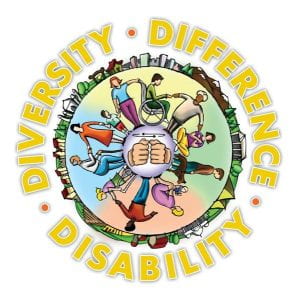Author:
Having studied as an MEd student at Thompson Rivers University (TRU), I have noticed considerable variation in Canada-India teaching styles. My initial studies in India focused considerably on rote memorization, learning from textbooks, and lecture-based learning, with precious little time allowed for critical thinking or active engagement. At TRU, though, I experienced an interactive, student-focused approach that welcomed discussion, presentations, and practice activities. I found it difficult initially, as I had not gotten into the practice of constructing knowledge from participation. I came to recognize the value for Universal Design for Learning (UDL) for facilitating a participatory learning environment that meets diversified learning needs.
If my early education had used multiple modes of engagement, for example, group discussions, case studies, practical learning, my problem-solving skills and communication would have been honed earlier. In the classroom where I will teach, in the future, I plan to implement UDL principles by having narratives, project-based learning, and digital tools, with top priority given to critical thinking and not recitation. But challenges such as time constraints and rigid curriculum standards can arise, and I faced this firsthand during my time in India. To counteract these, I will employ open-ended tests so that students are able to convey their learning through innovative projects, presentations, or classroom discussion helping them to think critically and actively engaged.
Jennifer Katz’s Three Block Model of Universal Design for Learning (2013) supports inclusion in the classroom by developing social-emotional learning, inclusive teaching practices, and supportive systems. To illustrate UDL concepts, I will create an infographic with the following features: Engagement, Representation, and Expression represented through icons of learning styles and examples in daily life. The curriculum will include visual elements, auditory indicators, and activity-based elements through the use of short text and interactive content that supports all learning styles and renders concepts easily comprehensible.
Reference:
Katz, J. N. (2013). The three block model of universal design for learning (UDL): Engaging students in inclusive education. Canadian Journal of Education/Revue canadienne de l’éducation, 36(1), 153-194. The Three Block Model of Universal Design for Learning (UDL): Engaging students in inclusive education

I admire how you contrast your Indian education with TRU’s student centered approach it demonstrates UDL’s ability to adapt to varied demands. I hadn’t considered how rote learning limits critical thinking, but your experience confirms that. Your future classroom ideas, such as project-based learning and open-ended examinations, sound like great ways to engage students. I experienced time limits as too, and your answers are reasonable. The graphical plan with icons and interactive features is brilliant it would undoubtedly benefit me as a visual learner. Katz’s model fits wonderfully here. Your emphasis on critical thinking over recitation is new and inclusive.
Thank you Kavita for sharing your insights on your different experiences in schools, and the contrast they have between schools in Canada and your home country. It is a slow process to go from exam based learning to educational methods like UDL. Even though every method has pros and cons, I think it is significant to recognize the necessity of critical thinking through engaging projects or certain learning topics. Sometimes it’s more than just right or wrong since the world is not always black and white. I am glad you got to experience some interactive learning when you were younger, and find it beneficial to apply UDL for your future curriculum. It’s also great that you are inspired by Katz’s model, which is a strong additional tool to support UDL for the new gen.
Thank you, Kavita, for sharing your perspectives on the differences between schools in Canada and your home country.
Transitioning from exam-based learning to approaches like UDL is a gradual process. While every method has its strengths and weaknesses, it’s crucial to recognize the importance of fostering critical thinking through interactive projects and meaningful learning experiences. Education isn’t always about right or wrong answers, as the world is complex and nuanced. It’s great that you had the opportunity to experience some interactive learning early on and see the value of applying UDL in your future curriculum. Additionally, your interest in Katz’s model as a complementary tool to support UDL for the next generation is truly inspiring.
Good example of how a flexible curriculum can meet the needs of diverse learners. Social and emotional learning is also important to integrate into the curriculum.